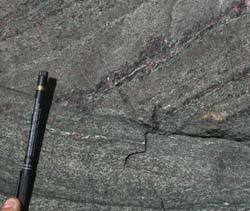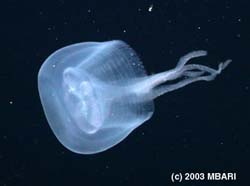The convergence of information and communication technologies into a national “cyberinfrastructure” is poised to revolutionize the environmental sciences and many other disciplines in the coming years, according to researchers presenting at the AAAS Annual Meeting in Seattle. The two Feb. 13 sessions on cyberinfrastructure were organized by the heads of two National Science Foundation (NSF) directorates.
The speakers will describe a very near future in which computing capabilities will pr
The transformation of terrestrial and coastal ecosystems by humans is well known, but only recently have the impacts of anthropogenic forces in the open ocean been recognized. In particular, intense exploitation by industrial fisheries is rapidly changing oceanic ecosystems by drastically reducing populations of many marine species. For most oceanic species we lack a historical perspective.
In an important article to shortly appear in Ecology Letters, Baum and Myers demonstrate that the ini

The deep layers of the Earth’s crust and the upper part of its mantle have been the target for investigation by a number of research groups at the EHU/UPV. This deep zone, and the processes that have taken place there in the past, can be investigated by means of studying those rocks which today are lying on the surface but which in past geological periods were at great depths.
On the Iberian Peninsula there are few places where one can find rocks which have been submerged at such depths (gr
NASA scientists have the first evidence more regional pollution lurks in clouds than in clear skies off the Asian coastline. This finding has implications for space-based attempts to monitor global pollution and for other populated regions around the world.
Scientists estimate that roughly two-thirds of Asian pollution from the Pacific Rim flows to the western, North Pacific Ocean under cloudy conditions. They based the study on direct measurements taken in and around clouds by aircraft ins

Wart-like bumps of stinging cells cover the feeding arms and bell of a newly described deep-sea jelly, published by MBARI biologists in this month’s issue of the Journal of the Marine Biological Association of the United Kingdom. This softball-sized, translucent jelly moves through the water like a shooting star, trailing four fleshy oral arms–but no tentacles–behind it. This and other unique features resulted in the jelly’s categorization as a new genus and species.
The MBARI researcher
Ruby deposits are the primary gem source in Central and South-East Asia. They are highly prized and have a special character: the rubies always occur as inclusions in marble. Geologists from the IRD and CRPG/CNRS (1) have investigated the tectonic and geochemical mechanisms involved in their formation and established a new model of how they generated. It involves feeder fluids resulting from solution of layers of salts present in the marble formations. These hot fluids were brought into circulation a